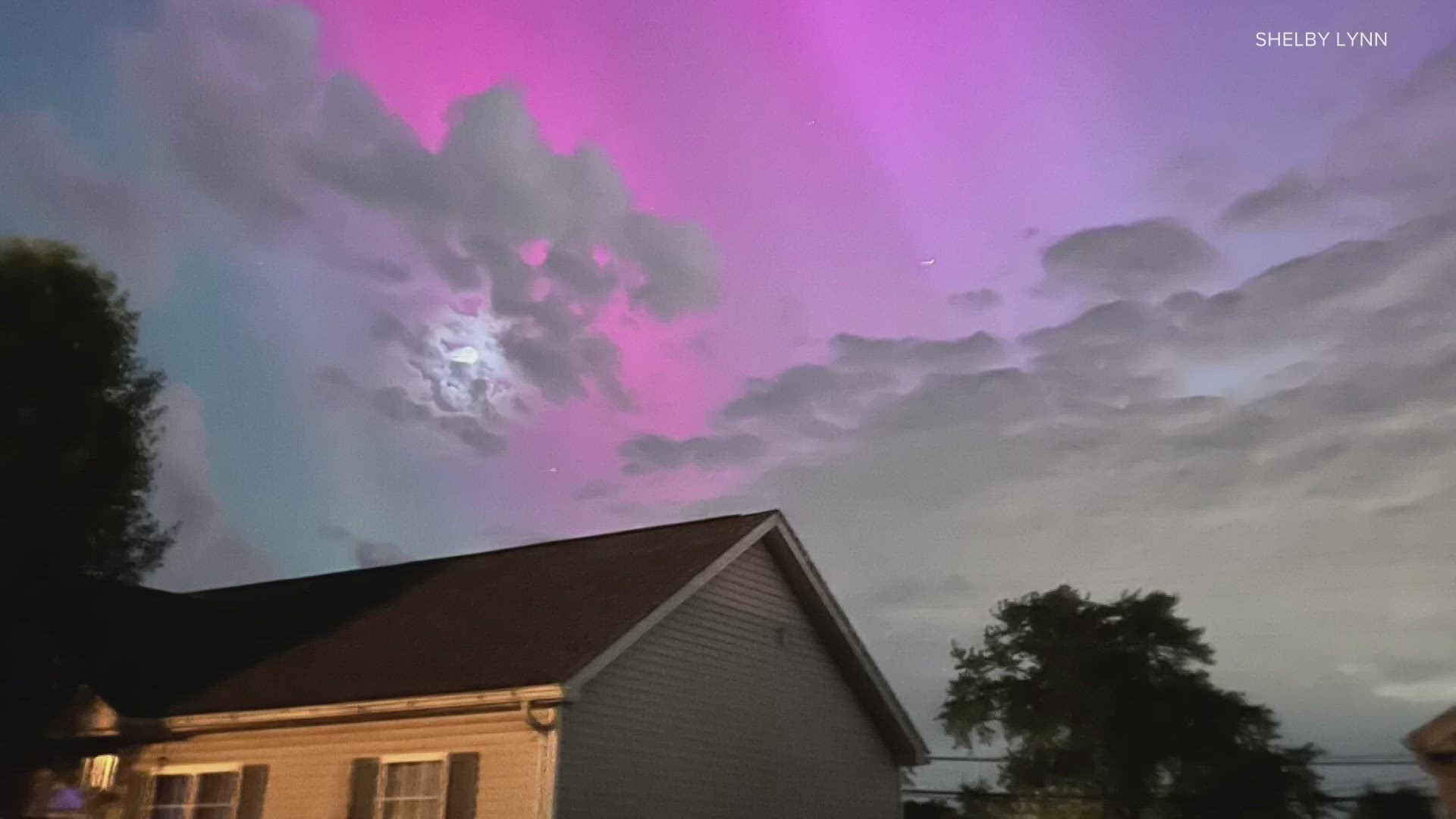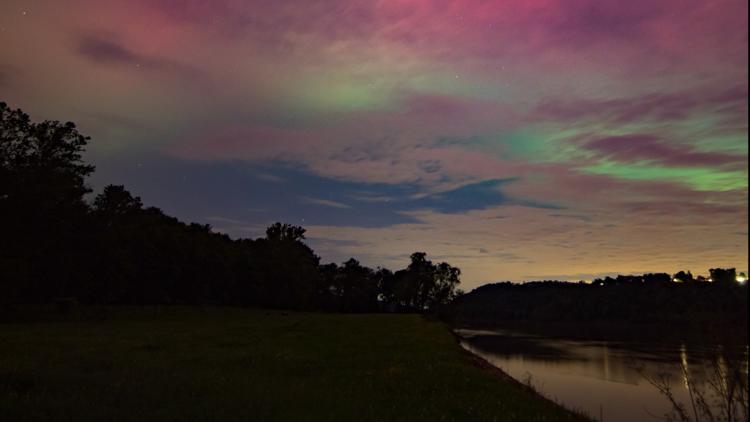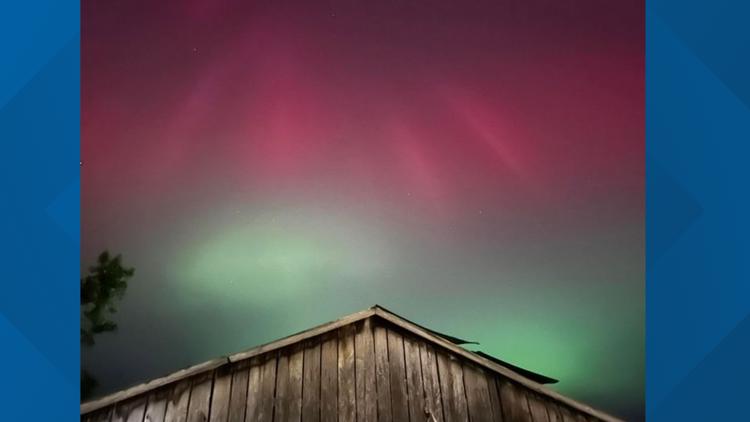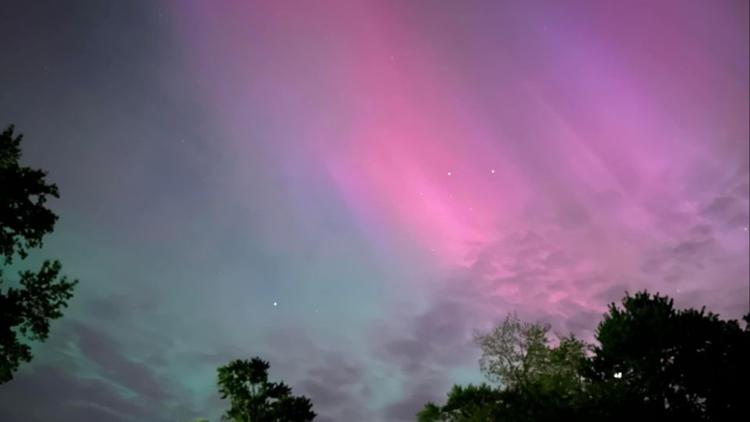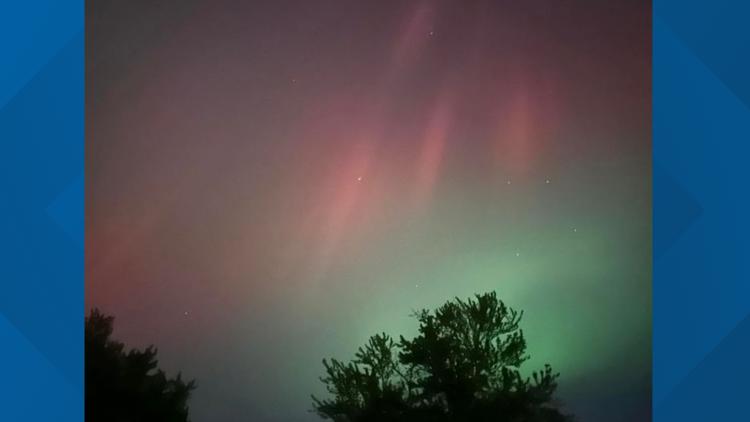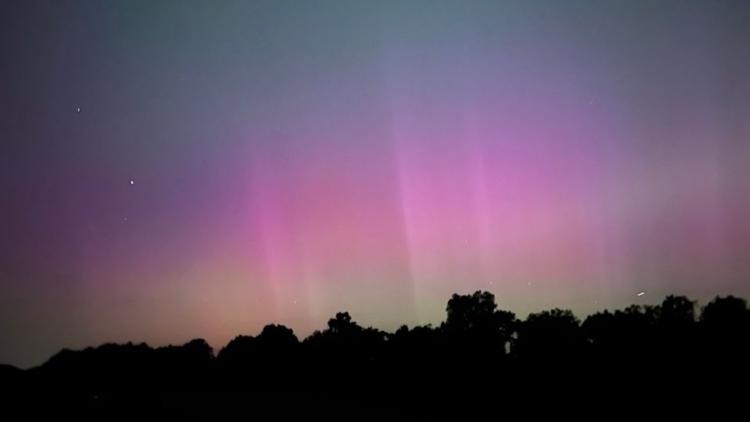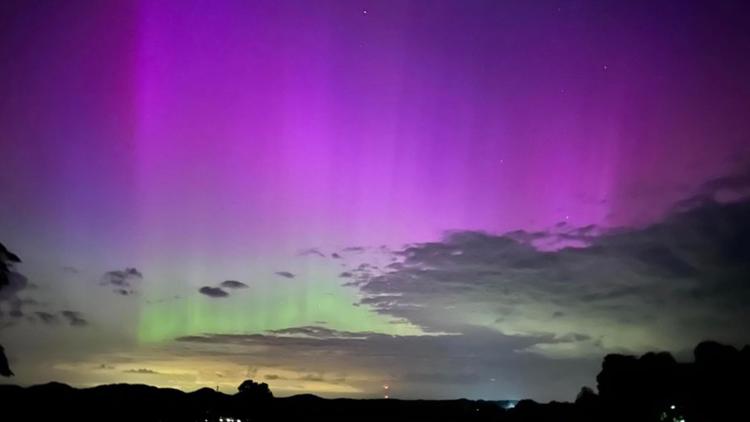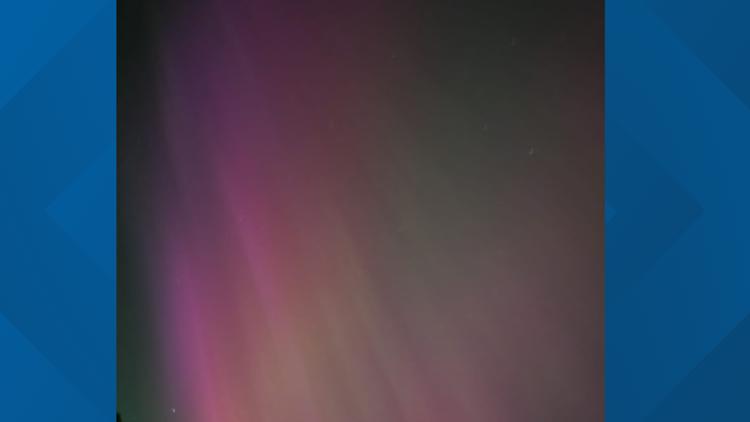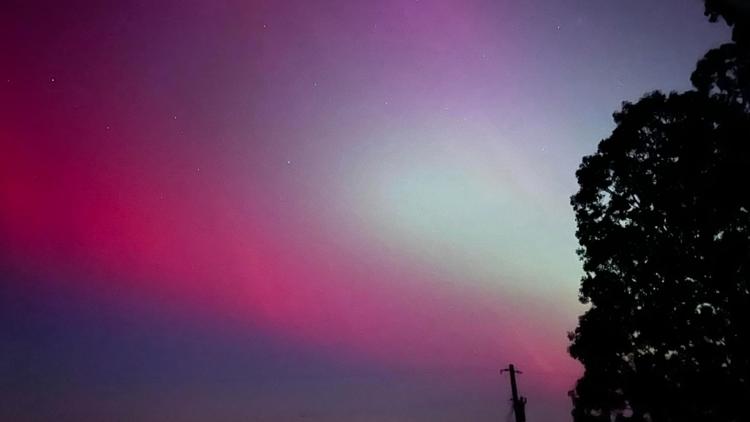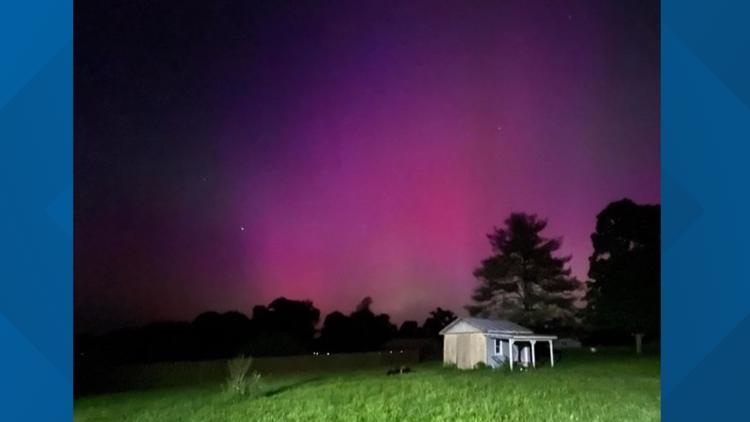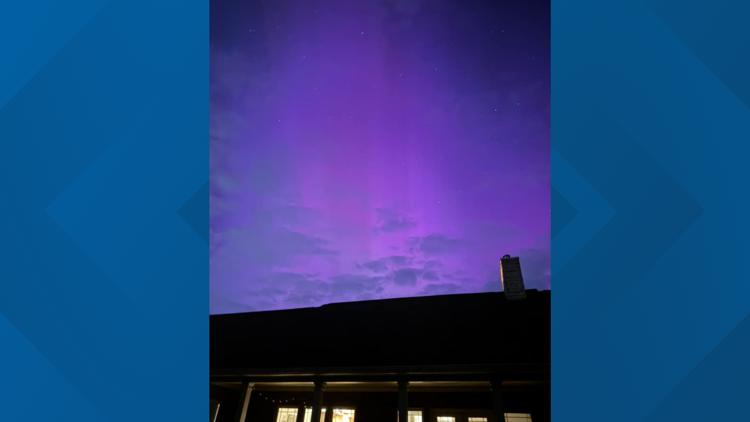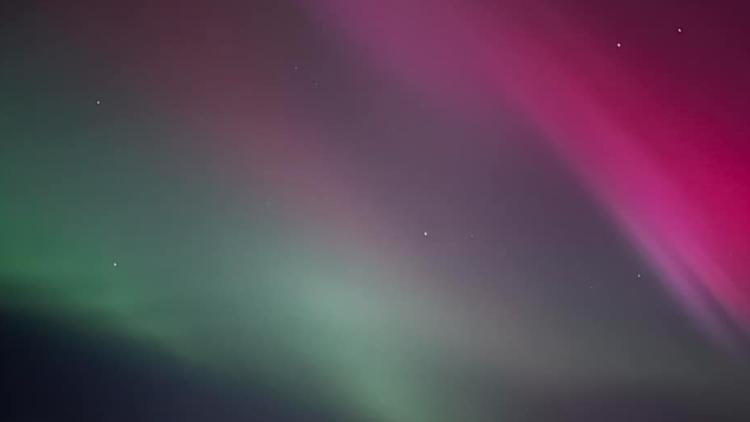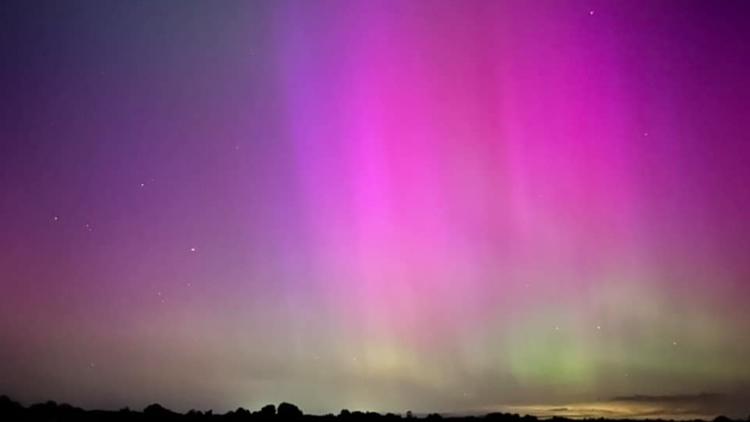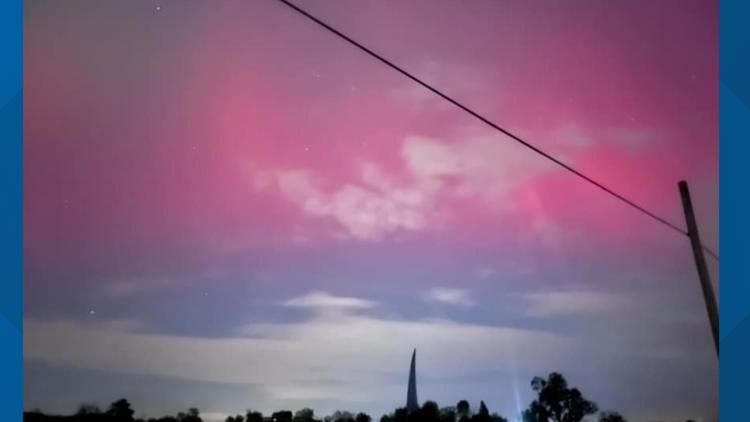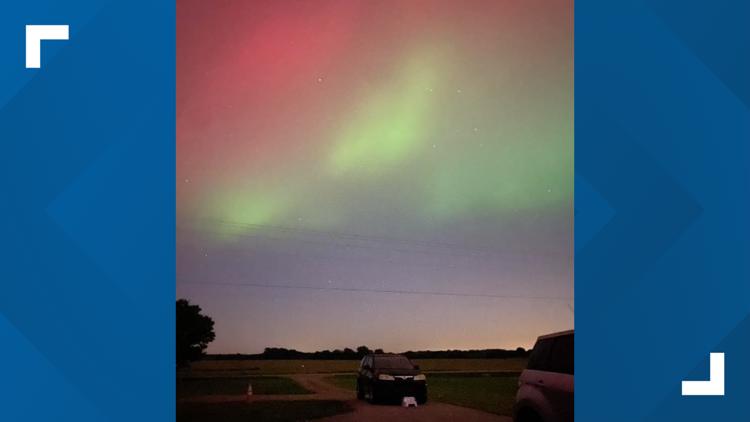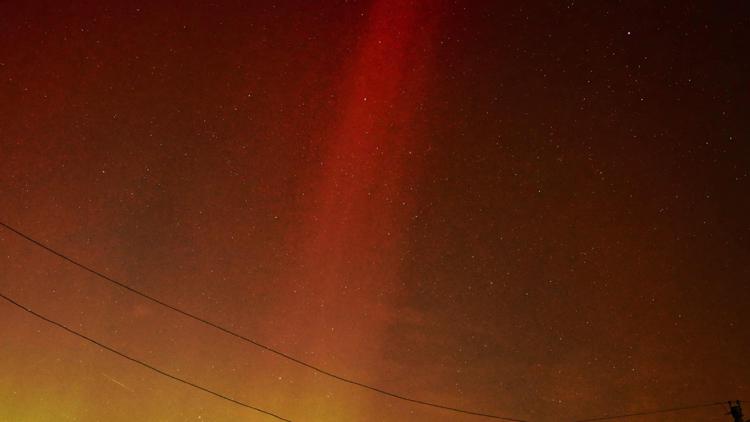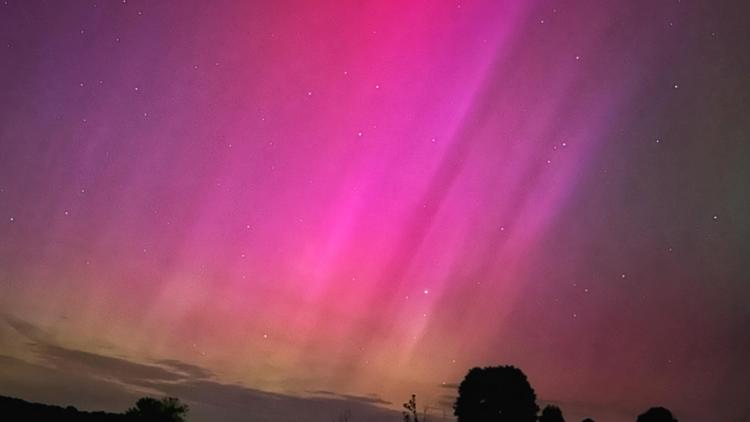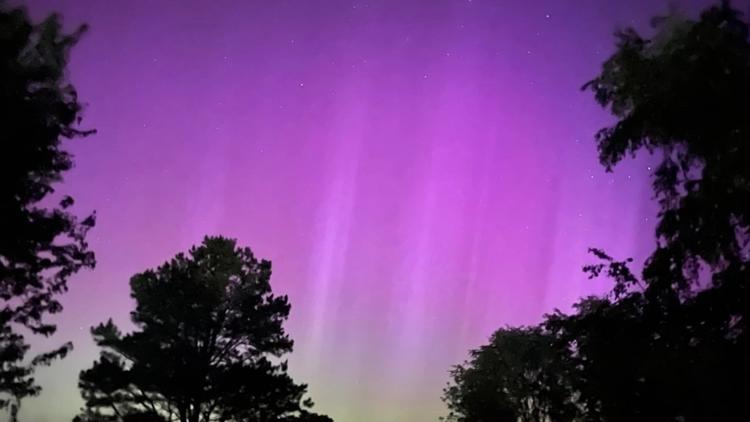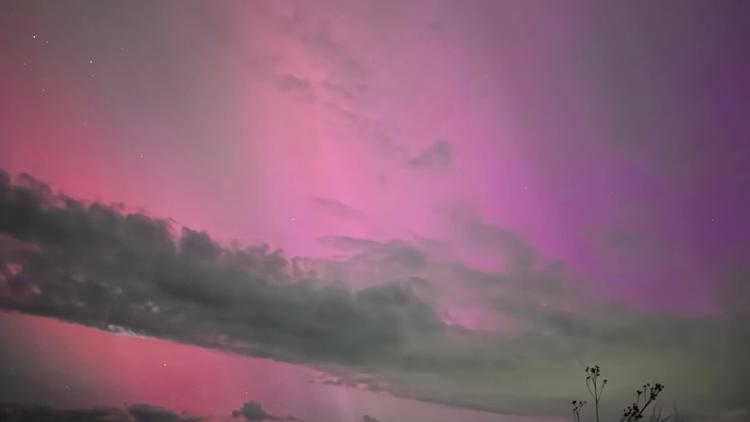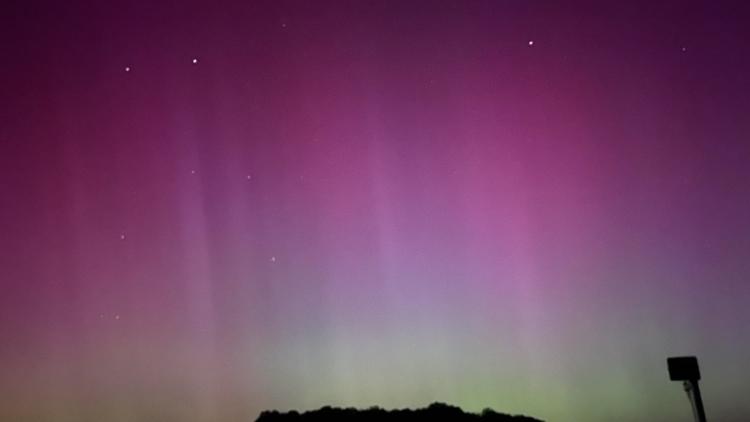LOUISVILLE, Ky. — Another strong solar flare from a strong geomagnetic storm on the Sun has been detected will again result in an unusually wide spread aurora borealis Saturday night across the Northern Hemisphere.
If you missed seeing the aurora borealis last night, you have one more opportunity.
The NOAA Space Weather Prediction Center is still forecasting another strong geomagnetic storm tonight, but has updated the timing.
The peak of aurora activity may now occur around 5 a.m. to 8 a.m. EDT on Sunday (May 12). You can still try looking around the 10 p.m. to 2 a.m. time frame like last night, but you may not have as much luck.
According to NOAA, the view line (or the location along which the aurora may be visible toward the northern horizon), does pass as far south as central Kentucky Saturday night.

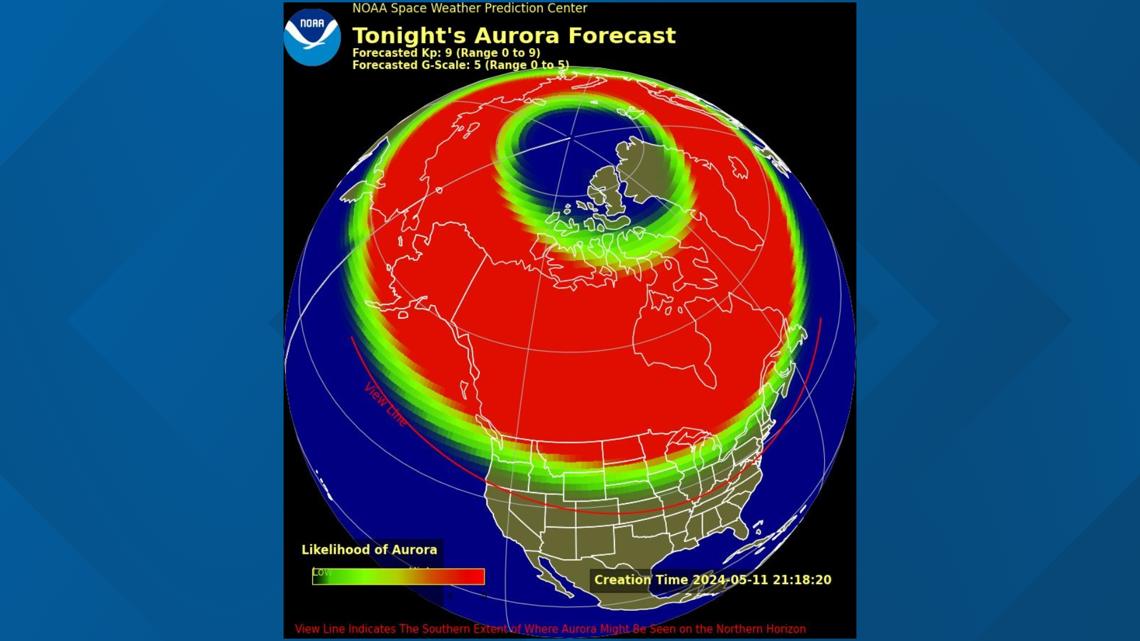
If you struggled to see the northern lights last night, you aren't alone. The colors come and go in waves, so it's possible you were looking up during a lull in the activity. Light pollution from urban areas can also obstruct the astronomical view.
The best tips for viewing the aurora include being in a rural area with little light to pollute the sky, and an area that has few trees that will block the northern horizon. On top of a hill might be a good place, for example.
By Sunday night, the geomagnetic storm that caused the colorful light show for millions in North America Friday and Saturday nights will have weakened, and you'll have to travel much farther north to be able to see the colorful spectacle.

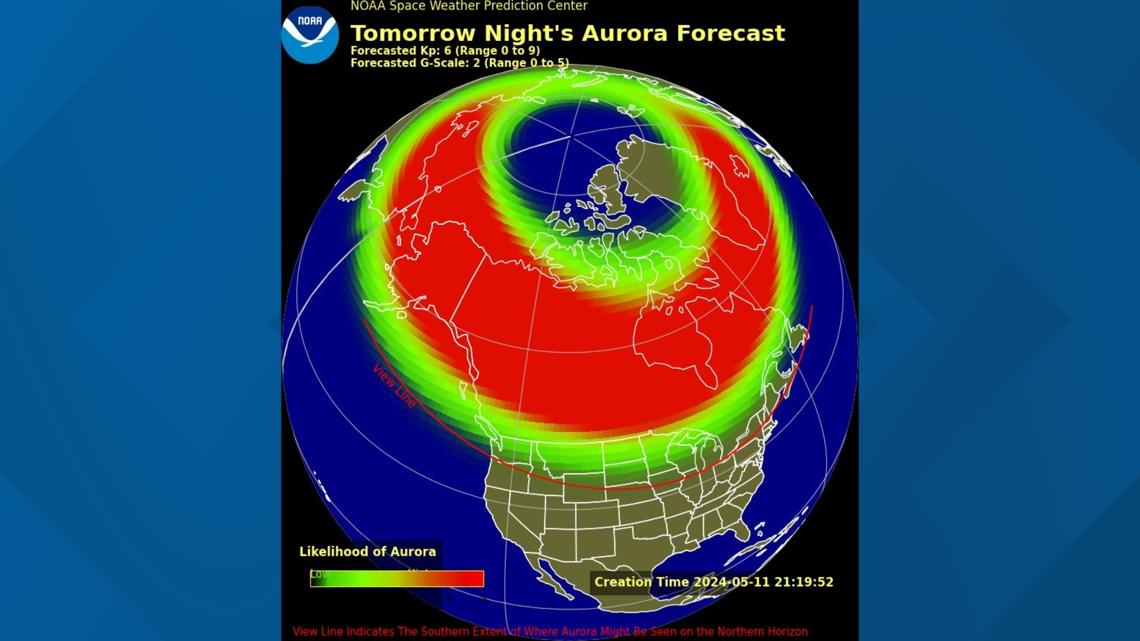
How do the auroras get their color? When solar material is ejected from the Sun, it's carried via the solar wind toward Earth's magnetic poles. There, electrically charged electrons hit various molecules in the atmosphere.
These collisions cause the different colors seen, based largely on the height in the atmosphere of the collision, and the type of molecules that were impacted. See the image below to get an idea of how high the different colors are occurring.

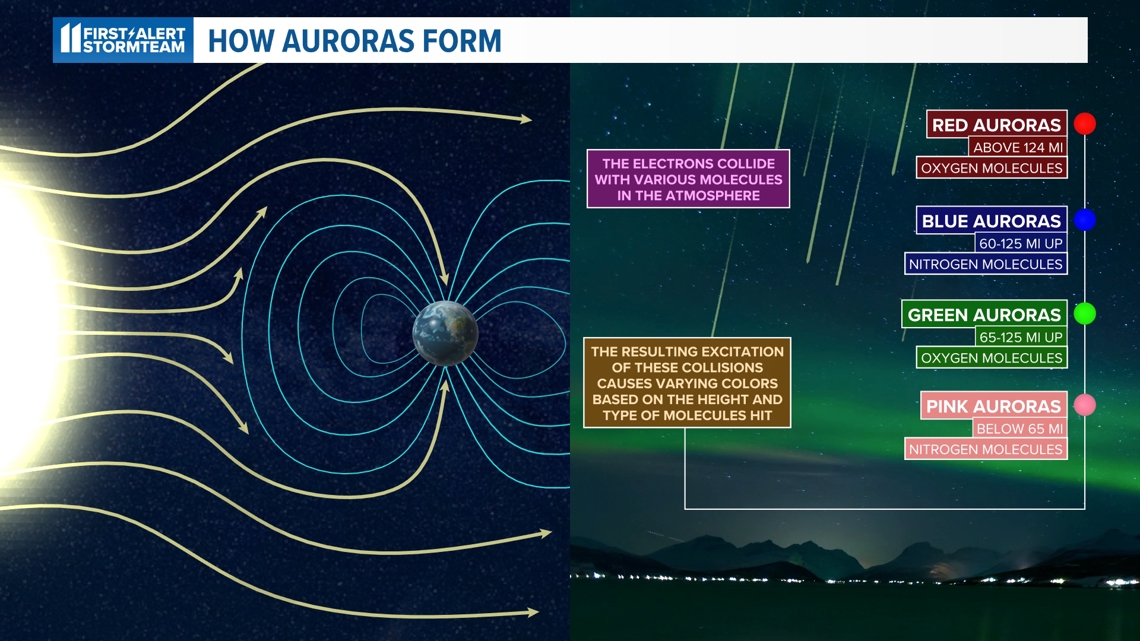
Take a look below at some of the photos captured Friday night.
PHOTOS | Northern Lights make appearance in Kentucky, Indiana
►Contact meteorologist Alden German at AGerman@whas11.com or on Facebook or Twitter.
►Make it easy to keep up-to-date with more stories like this. Download the WHAS11 News app now. For Apple or Android users.
Have a news tip? Email assign@whas11.com, or visit our Facebook page or Twitter feed.
RELATED VIDEO

